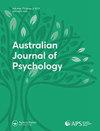An evaluation of a video-based intervention targeting alcohol consumption during aquatic activities
IF 3.6
4区 心理学
Q1 PSYCHOLOGY, MULTIDISCIPLINARY
引用次数: 5
Abstract
ABSTRACT Objective Alcohol consumption and being male are drowning risk factors. Changing beliefs and intentions to undertake risky aquatic-related behaviours, such as consuming alcohol, is key to reducing loss of life and injury. We evaluated the impact of a video encouraging change in young males’ social cognitions and intentions to discourage their mates as well as their own alcohol consumption around the water. Method A three-wave non-controlled pre-test-post-test design was adopted. A convenience sample of Australian males aged 18–34 years (N = 97) who self-reported drinking alcohol and engaging in aquatic activities was recruited. Participants were surveyed at baseline (T1) regarding social cognition constructs and intentions, immediately after viewing the video (T2) and at a one-month follow-up (T3). Results Repeated measures ANOVAs revealed significant main effects of time on intentions, subjective norms, and attitudes regarding discouraging mates from drinking and swimming, but no significant main effects of time on perceived behavioural control or risk perceptions. The same patterns of effects were observed regarding drinking and swimming on males’ own behaviour. Conclusions The video has the potential to influence young males’ social cognitions regarding their mates’ and their own risky drinking behaviour around water in the short term, although sustained interventions are required. Messaging delivered on-site at popular aquatic locations in the lead-up to traditionally risky periods for alcohol-related drowning should be considered. Provision of strategies to combat social pressures among young males to act on their intentions to engage in drinking and swimming are needed. KEY POINTS What is already known about this topic: (1) Drowning is a significant cause of injury-related mortality and morbidity. (2) Alcohol is a risk factor for drowning, with young males commonly represented in alcohol-related drowning statistics. (3) Achieving lasting improvement in behaviour among males is challenging, despite the use of water safety interventions based on theory. What this topic adds: (1) This study presents the first evaluation of a video that aimed to encourage change in young males’ social cognitions and intentions to discourage their mates alcohol consumption around water. (2) Results indicate significant main effects of time on intentions, subjective norms, and attitudes regarding discouraging mates from drinking and swimming, as well as drinking and swimming themselves. (3) The video has potential to influence young male’s social cognition for their mates’ and their own behaviour in the short term, although sustained interventions are required.针对水上活动期间饮酒的视频干预评估
摘要目的饮酒和男性是溺水的危险因素。改变信念和意图,采取与水有关的危险行为,如饮酒,是减少生命损失和伤害的关键。我们评估了一段视频的影响,该视频鼓励年轻男性改变社交认知和劝阻配偶的意图,以及他们自己在水中饮酒的意愿。方法采用三波非受控试验前试验后设计。招募了一名18-24岁(N=97)的澳大利亚男性,他们自我报告饮酒和从事水上活动。参与者在基线(T1)、观看视频后立即(T2)和一个月的随访(T3)接受了关于社会认知结构和意图的调查。结果重复测量方差分析显示,时间对劝阻配偶饮酒和游泳的意图、主观规范和态度有显著的主要影响,但对感知的行为控制或风险感知没有显著的主要作用。饮酒和游泳对男性自身行为的影响模式相同。结论该视频有可能在短期内影响年轻男性对配偶的社会认知,以及他们自己在水周围的危险饮酒行为,尽管需要持续的干预。应考虑在传统上与酒精相关的溺水风险期之前,在受欢迎的水上地点现场传递信息。需要制定战略,应对年轻男性的社会压力,让他们按照自己的意愿饮酒和游泳。关键点关于这个话题已经知道的内容:(1)溺水是导致受伤相关死亡和发病率的重要原因。(2) 酒精是溺水的一个危险因素,在与酒精相关的溺水统计数据中,年轻男性通常占主导地位。(3) 尽管使用了基于理论的水安全干预措施,但实现男性行为的持久改善具有挑战性。本主题补充道:(1)本研究首次对一段视频进行了评估,该视频旨在鼓励年轻男性改变社交认知和意图,以阻止配偶在水周围饮酒。(2) 结果表明,时间对劝阻配偶饮酒和游泳以及饮酒和游泳本身的意图、主观规范和态度有显著的主要影响。(3) 该视频有可能在短期内影响年轻男性对伴侣和自己行为的社会认知,尽管需要持续的干预。
本文章由计算机程序翻译,如有差异,请以英文原文为准。
求助全文
约1分钟内获得全文
求助全文
来源期刊

Australian Journal of Psychology
PSYCHOLOGY, MULTIDISCIPLINARY-
CiteScore
5.50
自引率
0.00%
发文量
19
期刊介绍:
Australian Journal of Psychology is the premier scientific journal of the Australian Psychological Society. It covers the entire spectrum of psychological research and receives articles on all topics within the broad scope of the discipline. The journal publishes high quality peer-reviewed articles with reviewers and associate editors providing detailed assistance to authors to reach publication. The journal publishes reports of experimental and survey studies, including reports of qualitative investigations, on pure and applied topics in the field of psychology. Articles on clinical psychology or on the professional concerns of applied psychology should be submitted to our sister journals, Australian Psychologist or Clinical Psychologist. The journal publishes occasional reviews of specific topics, theoretical pieces and commentaries on methodological issues. There are also solicited book reviews and comments Annual special issues devoted to a single topic, and guest edited by a specialist editor, are published. The journal regards itself as international in vision and will accept submissions from psychologists in all countries.
 求助内容:
求助内容: 应助结果提醒方式:
应助结果提醒方式:


